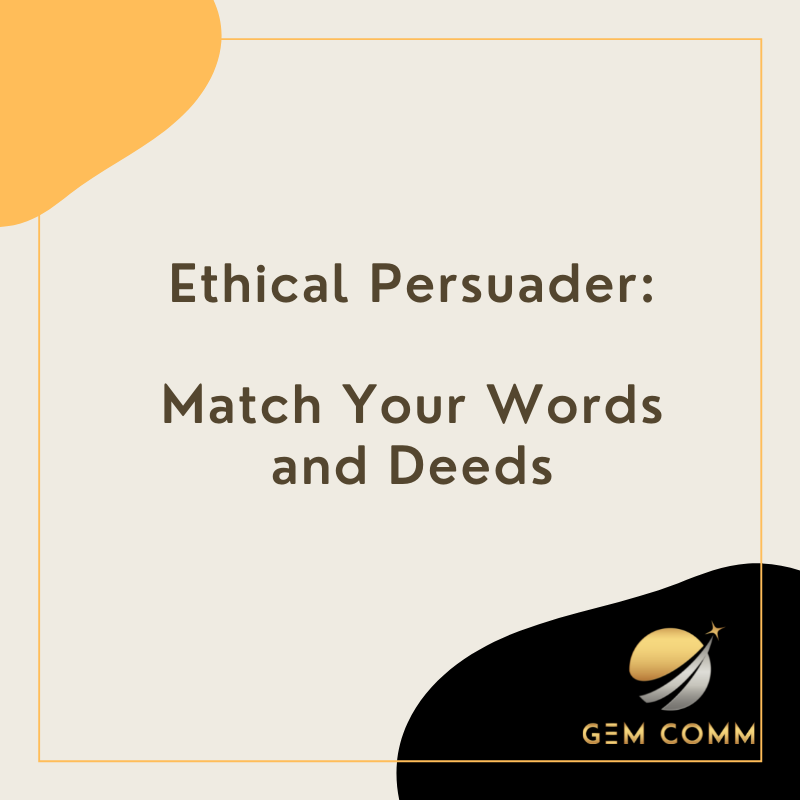Features
Everything You Need to Know About Media Relations

From breaking news to making views, from gathering data to sharing valuable insights, when it comes to communicating with the masses, media has always been at the top of the news chain. Be it printing, broadcasting, or digitalization (internet), media has always stayed at the forefront of it all.
With the eyes and ears of the masses upon it, and with the trust it has built upon people’s minds, media has clearly shown an unmatched potential to influence the world around us as we know it.
Be it global events, international affairs, sports, politics, entertainment, or business, media is everywhere and nothing can be kept hidden from it for too long. In fact, the accuracy of the content is the first thing that most media outlets look for. And even if they don’t find any, the impact they can create is still crucial.
The power of the media can create, nurture, or destroy anyone’s reputation with just a single story or click. And that’s why it’s too important to build solid connections with the press regardless of whether you represent a company or a celebrity.
With media on your side, you can get more weight and credibility into what you have to say without having to worry about any backlash. Especially if you’re new in the market and don’t have a lot of authority in your niche. Media relations can help you create the impression you’re looking for and convey your story in a favorable manner.
What is media relations?

Media relations is a part of public relations (PR) that specifically deals with the media. While public relations is all about making good relations with the public, or the consumers; media relations is primarily about managing your relations with the press.
Working with the media is not a one-sided affair either. It’s a mutually beneficial relationship where both the brand and the media get what they want. Brands get the coverage they need, and journalists get the stories that are worth telling. Moreover, based on the content and purpose of your story, the press can further publish and distribute it to other channels.
And that includes all the modes of traditional and digital media options starting from conventional news channels to online newswires. From printed media such as newspapers and magazines to digital content like blogs, vlogs, and promotional videos. And from television and radio broadcasting to thousands of individual influencers on social media.
As you can see, the scope of modern media has expanded very well over the last few decades, especially with the rise of internet; but so is the competition. While social media has turned every other person into a well-informed journalist; there is still a lot of misinformation and fake news being circulated on the internet with fake news being one of the biggest challenges for journalists around the world. And that’s where verified media plays its part of providing authenticity and truth to the whole story.
Why is media relations important?
Media relations are at the heart of public relations. After all, it’s the public you’re trying to reach out and connect with at the end of the day.
Media relations is also a cost-free solution to many of your PR challenges. You can use it to inform the public about many of your usual business activities such as the launching of a product, its promotion, upcoming events, special campaigns, award ceremonies, sales and discount offers, financial and organizational disclosures like a crisis or strike, your community service and so on. All while gaining the trust, attention, and reputation you need in order to create an impact.
When you share news via media channels that are verified, it automatically creates the impression of belief in the minds of your audience.
Here are some of the biggest advantages of media relations as it helps you build:
1. Trust:
Building trust in the eyes of your audience is one of the greatest benefits of media relations. Most prospects and potential customers tend to go by the word of mouth. Not just anyone’s word of mouth, but of the people they trust. For instance, media companies that they keep an eye on, or the influencers that they wholeheartedly follow, or the brands they truly respect as a business.
Having a well-established media company vouch for your statements is what builds people’s trust in your brand in the long run.
2. Brand Awareness:
Brand visibility and awareness is yet another major advantage of having strong media relations. By having your story published through a popular news agency, you can get more reception of your content as compared to releasing the story on your own.

While the later would allow you to draw the attention of your existing clients, a well-known media outlet would get you more people outside of your regular customer base, and thus increase your audience. As more and more people get to know about your brand, product and services, it automatically gives you the desired publicity and increases the brand awareness.
3. Authority:
The biggest advantage of building strong and healthy relations with the media is the authority you gain in your space when they back-up your news stories.
Most genuine readers and consumers have an immense trust on sites and newswires that they usually go to. They know that a lot of work like background check and verification has been done by the media company before publishing the story. They also have a fair idea about the sites and influencers that stick to authentic news from those that promote fake news and misinform.
Therefore, when your news appears on an authentic news channel, it naturally builds and improves your brand’s authority in the market.
What’s the difference between media relations and public relations?
Although media relations are public relations, in no way are they the whole thing. Media relations are just one of the many parts of public relations. So, let’s not mistake it for one another as media relations aren’t the only type of PR but just one of them.
Public relations is the main domain that involves a company’s interactions with all groups of people involved in its business. While media relations is mainly about working with the media for the company’s image and overall benefit, there are other subsections of PR that deal with consumers, stakeholders, investors, and lawmakers etc.
So, while PR is the relationship between a business and the public as a whole; media relations are limited to business and the media. Yet, the goals of both PR in general and its various subsets are to get you the mass coverage, publicity, and brand image you desire.
To clarify it further, here are 3 major ways that can help us differentiate the media and public relations:
1. Public relations use multiple channels to build a healthy relationship with the public. Media relations is just one of them and thus uses only one channel i.e., the media or the press.
2. All media relations are public relations but all public relations are not media relations.
Other types of PR include:
– Community relations
– Crisis communication
– Public Affairs
– Social Media Communication
– Internal Employee Communications
– & Strategic communications PR
3. Public relations create the message, media relations provide you the microphone so as to deliver it to the masses. And while there are many ways for companies and PR professionals to get their word out and make it viral, media remains the best and the most trusted method there is when it comes to reaching the masses without having to spend extra dollars.
What are the Main Objectives of Media Relations?
Although media relations revolve around coverage and publicity, there are 3 main objectives to it:
1. At its core lies relations building with the press, journalists, and media personnel who can design and publish the story or news in your favor. Having strong connections within the press is quite important whether you have anything to share on the instant or at a later time. But that does not mean that you should have a countless number of friendly people in the media. Remember, having a few stable connections who can help you get your story published in all the right places is all you need to get the desired results.
2. The next objective of media relations is brand awareness. It’s how people would get to know about your brand, business, products and services. And with the right people from media on your side, it won’t take long for your brand to become visible in the highly competitive markets.
Showcasing your brand in the mainstream media will also help you become a key player in your area expertise, eventually increasing your target audience and thus brand awareness as well as reputation.
3. Last but not the least- Sales! Sales and profit is the ultimate goal of any business and its marketing efforts. Although media relations is in no way associated with direct marketing, the influence and leads it generates during brand awareness does the much needed job of boosting your sales and profit.
How to build a media relations strategy?
A well-formed media relations strategy is all about sticking to the fundamental principles of journalism i.e. who, what, where, when, and why. In short, the 5Ws. The point is to know your goals firsthand as well as the kind of journalists you consider are best suited for the story. You may also want to check if the media outlet you’ve contacted has any specific needs or requirements that you must meet prior to sharing the story.

Remember, media relations is a complicated business that needs regular contact and utmost care at every step of the way if you want to take good use of the press.
Timing is yet another crucial aspect of a sound media relations strategy that can increase or decrease the chances of your story from being heard. The trick is to have your story published only when there are no other stories waiting to be published. You can do that by having it published either early or later than the exact hours (exact hours being high time for releasing the news). So instead of posting it at 2.00 HRS, go for 1:45 or 2:20 HRS.
How to write a media pitch that gets results?
Pitching is where it all begins. Be it an e-mail pitch or an old-fashioned press release, or any other media pitch for that matter, it is what tells the journalists about the essence of your story, the target audience, and the objectives you expect to meet.
Therefore, every media pitch regardless of what format it is in has to be simple yet effective.
Here’s how to write an effective and well-crafted media pitch:
1. Start by giving the pitch a proper and appealing subject heading.
2. Mention your name, occupation, and the company you represent in the sender’s line.
3. Provide a brief and relevant introduction about your business and your target audience.
4. Get to the point quickly and offer some value to your media contacts by suggesting how your story can capture more viewers for the media company.
5. Take advantage of multimedia by including visuals, graphics, video clips, and infographics such as data and stats to convey your story in a compelling and effective way.
6. Track your media pitch for future correspondence.
Conclusion:
The need to have proper media channels is a must if you want to get your word out in your favor. Especially in the world of business, where one wrong move or maneuver can cost you fortunes. Luckily, with good media relations, you can save money as well as achieve the desired publicity that you want for your story without having to run from place to place.




